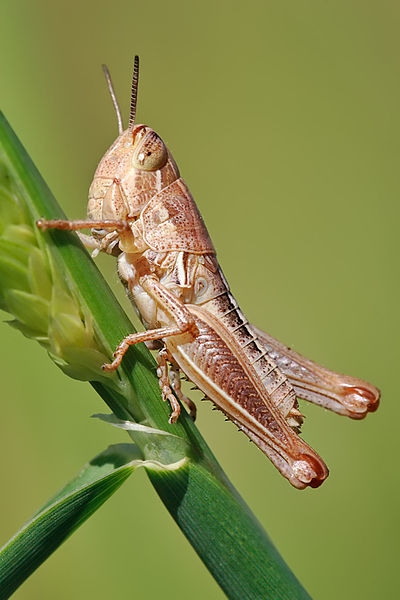From the UC Blogosphere...
Bed Check!
All winter long my bee condo housed 16 tenants...and one earwig. And quite comfortably, too, thank you. It all began last...

Newly emerged leafcutter bee outside her nest. (Photo by Kathy Keatley Garvey)
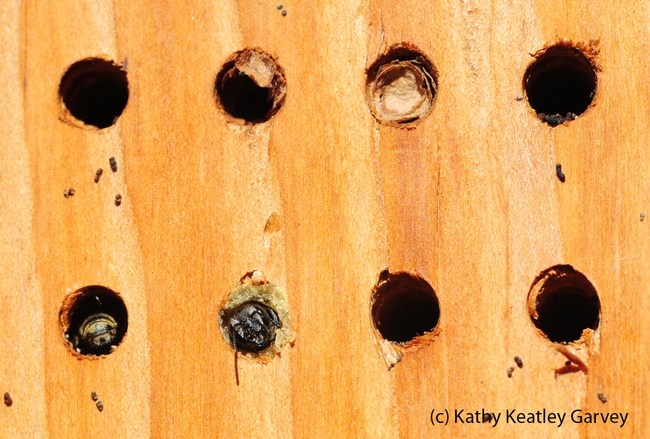
One leafcutter bee is tucked in head first; the other is ready to leave. (Photo by Kathy Keatley Garvey)
Red Scale Degree Day Update June 11
Degree days are about 1 week behind the 30 year average. This year in Tulare County, the first male flight occurred in mid-March, the first crawlers appeared in mid-May, and this week as the degree days approach 1100, the 2nd flight of male scale has begun.
Kern: 1089
Tulare: 1051
Fresno: 1036
Madera: 915

It's a good year for grasshoppers
A wet spring in 2011 set the stage for a grasshopper invasion in 2012, according to a story on KNVN News, the NBC affiliate in Northern California.
"Last year was a nice wet year, lots of feed. We had a chance for the population to build up. They lay eggs in the fall, those hatch in the spring so we got a lot more hoppers this year," said Joe Connell, UC Cooperative Extension advisor and county director in Butte County.
Grasshoppers can strip vegetable crops and vegetable gardens, Connell said. One of the best ways to protect the garden is to have a lush, green grassy area separate from the garden.
"You can either spray with a carbaryl insecticide or bait it with grasshopper bait, which can control their population," Connell said.
Gardeners who don't want to use insecticides can try buying chickens or guinea hens to keep grasshoppers under control.
Know Your Sticks
Entomologists at the Bohart Museum of Entomology at the University of California, Davis, want you to “know your...
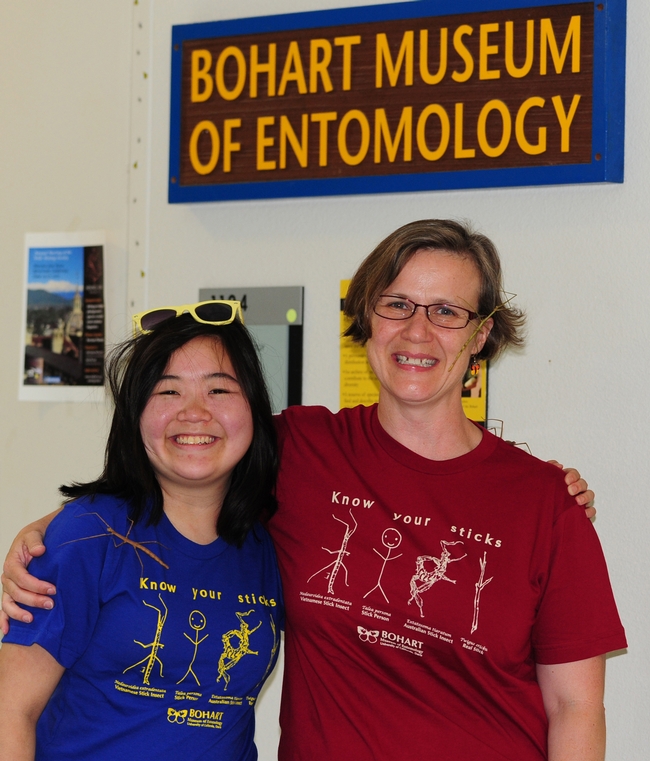
Ivana Li (left) and Fran Keller wearing their "Know Your Sticks" t-shirts. Note the real walking stick insects. (Photo by Kathy Keatley Garvey)
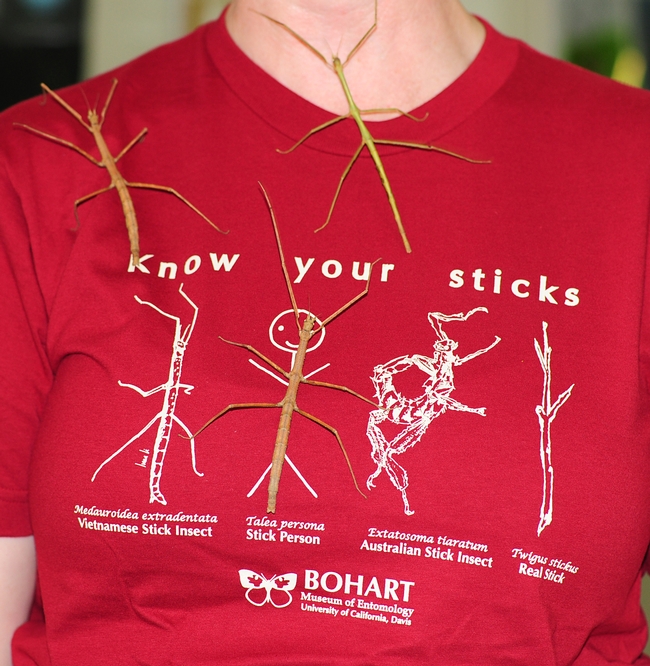
Check out the stick on the stick, second from left. (Photo by Kathy Keatley Garvey)
Western Farm Press runs 1,000-word story on Kearney blueberry event
The annual Blueberry Open House at the UC Kearney Agricultural Research and Extension Center last month warranted lengthy coverage by Western Farm Press.
Freelance writer Dennis Pollock reported that Manuel Jimenez, UC Cooperative Extension advisor in Tulare County, a small-scale farming expert, walked among the mature blueberry plants at Kearney, describing their good points and bad points.
"The perfect blueberry would be one that is big, firm, sweet, easy to harvest and grows in high pH (soil conditions)," he said.
At the event, Richard Molinar, UCCE advisor in Fresno County, small-scale farming, conducted a blueberry tasting, allowing those who attended to vote for their favorite three varieties. He said that variety isn't the only factor impacting flavor.
"Flavor is also affected by weather, soil factors, plant nutrition and irrigation frequency," Molinar said.
Jimenez introduced growers to two new research projects in blueberries:
- Jimenez and Larry Schwankl, Kearney-based UCCE irrigation specialist in the UC Davis Department of Land, Air and Water Resources, have teamed to study the effects of varying irrigation levels on blueberries.
- Jimenez has grafted popular blueberry varieties onto the roots of farkleberry (Viccinium abroreum), which has greater tolerance of alkaline soils like those found in the San Joaquin Valley. By reducing or eliminating soil and water acidification, using the alternate rootstock may provide a significant cut in production costs.
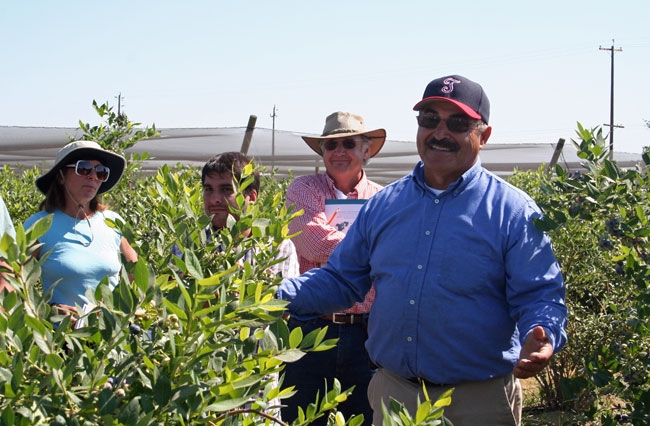
Manuel Jimenez leads a tour of the 15-year-old blueberry research plot.



